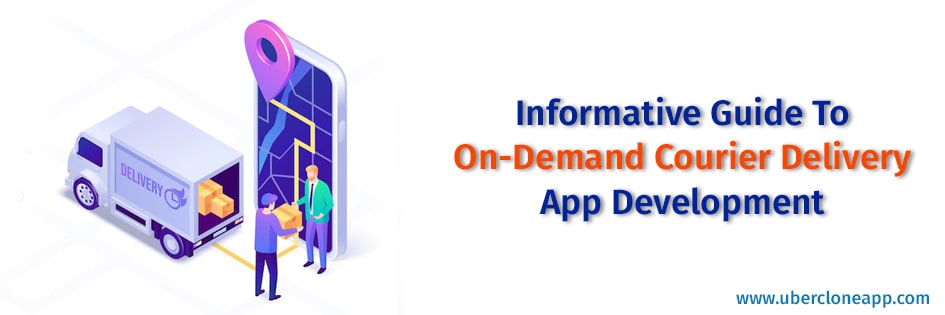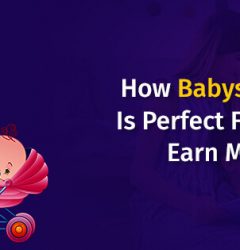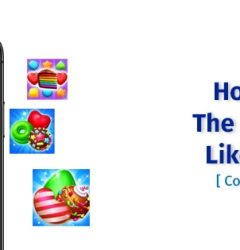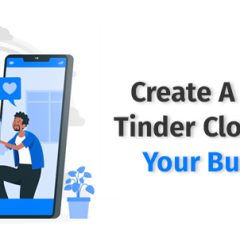23 May 2022
by: uber

Digitalization has proved to be a boon for e-commerce and online retail companies. The courier delivery services have been rising in recent years. According to international studies and research, the courier delivery industry has hit an estimated 400 billion dollars. The use of on-demand courier apps has doubled since the Covid-19 outbreak. People can order essential items hassle-free by using these on-demand courier delivery services.
There are various types of on-demand apps used to deliver food and clothes from door to door. Using on-demand apps like Uber and Bolt, one can avail of maid, nanny, or dog-walker services with just one click. Hence, it has become an utter need to develop an on-demand Courier App Like Uber.
To develop an On-Demand Courier Delivery App, we have to follow essential steps:
1. Choose A Business Model:
It is crucial to understand the business model type you want to follow while developing an on-demand courier delivery app. You have to perform a thorough analysis of all the business models available in the market, then choose the desired model according to your budget.
There are various options of business models, such as on-demand parcel delivery, retailer shipping app, postal service app, etc. You have to analyze your resources and develop an app that best fulfills the requirements of your audience.
Postal and courier service apps like FedEx supports the software that lets users track their dispatch, shipping, and delivery processes. A courier delivery app clone like Uber is best for a courier delivery at a nearby location.
2. Finalize the Business Model:
Courier app like uber is essential for both users and deliverymen. Hence, a company will have to develop two different apps for the user and the delivery person.
User App – The user app is the primary app, which must be given top priority. If a user places delivery services and makes the payment, a delivery man is arranged for them to provide the required service. The user app is optimized to view delivery personnel nearby so that the user can easily track their live location.
Delivery Person App – The delivery person app is optimized to navigate the customer’s location and destination. Hence, the GPS location tracker must function precisely. The delivery person’s availability, along with the customer’s availability, is visible on the admin panel.
3. Plan Ideas And Research:
After selecting and finalizing your business model, it is necessary to validate your ideas for understanding the customer requirements. Also, it is crucial to conduct extensive research on different topics which will satisfy the customer while developing an on-demand courier app like Uber.
Proper market research lets you understand the requirements of the target audience, locations of service, vehicles used for delivery, determine the parcel size & cost per package, commission fees for delivery services, and the range of products to be delivered. Understand the need for developing an on-demand courier app and also its scope. It is always essential to frame a flow chart of the ideas while creating an on-demand courier delivery application.
4. List Out the Features:
While developing a courier delivery app clone like Uber, you have to decide on the various features you want to add to your on-demand application. Also, keep in mind and determine the basic features based on budget, goals, design, development, and uniqueness. The following features of on-demand apps are:
- Customer App Panel –The customer app panel has features like sign-up via mobile or social media, courier tracking, customer profile, rating & review, parcel cancellation, and payment options.
- Driver App Panel – The driver app panel consists of registration, parcel details, location/navigation, pickup & parcel drop stats, salary, and customer feedback.
- Admin Panel – The admin panel has a dashboard, customer management, driver management, order tracking, and feedback features.
5. Select The Right Developer:
While developing an on-demand courier app like Uber, it is crucial to hire skilled app developers. The highly skilled developers can help you create an efficient on-demand app. A proficient team of designers and software developers helps develop a high-quality app.
It becomes easier to build your courier delivery app when taking the assistance of an outsourcing company for your app development project. Outsourcing your project is cost-effective and time-saving. Efficient developers provide end-to-end support for the timely delivery of your project.
They are extremely good at coding and have expertise in app development. Hence, to build your on-demand courier delivery app like Uber, you can hire professional developers from any renowned app development organization.
6. Development Process:
The development of an on-demand courier app like Uber involves backend development and frontend development. The backend development is used for availing all the features for displaying your on-demand courier delivery app.
Backend development involves the incorporation of navigation, payment, registration, etc., for the smooth and seamless functioning of the app. Frontend development mainly focuses on UX/UI designs of the application.
The frontend development ensures organizing all the features of your on-demand application. The developers work hard to design your on-demand courier delivery app and run it on various web platforms.
Read More About: Complete guide about Uber Clone App Development: Cost, Features, and Market Growth
7. Create an MVP:
Once the design and development of the application are completed, you can create a minimum viable product (MVP). It is the simpler version of your on-demand courier app, which facilitates the needed solution with minimum features. The MVP can be released to various mobile platforms like an iOS App Store and Android Play Store.
MVP allows you to validate the idea of your on-demand application and update its features based on customer feedback. A creative MVP attracts many entrepreneurs to invest in your project. MVP validates your application by providing data and analytical reports.
8. Testing:
After developing a courier delivery app clone, it is necessary to run the app in a testing phase. App testing is done to ensure their smooth running on various platforms. The apps undergo functionality and performance tests, speed tests, UI/UX tests, admin tests, compatibility tests, and security tests.
The tests assure that the application works efficiently without crashing. App testing will help update and enhance the performance of your application. The consumer experience testing assures the end-users don’t face any difficulty while using the on-demand apps.
9. Launch the App:
After the development and testing of your on-demand courier app like Uber, it is ready for launch. You can build a full-fledged app with this process. After launching, the application can be distributed directly among customers.
The market demand for on-demand courier delivery apps is increasing every day and serves as an opportunity for business enthusiasts to invest in developing applications. Around 70-80% of customers prefer online shopping due to online courier delivery services. Hence, there is a high requirement for on-demand courier delivery apps.
Conclusion:
The scope and opportunities of online courier delivery app clone allow users to ace their business goals. Once you build your application, take necessary actions for its maintenance. If you work with creative developers of Uber Clone App then they will help you build an on-demand courier delivery app that would serve perfect competition at the market level.
Different experienced mobile development companies are working hard to create an on-demand courier delivery app that could yield high profitability in your business.



